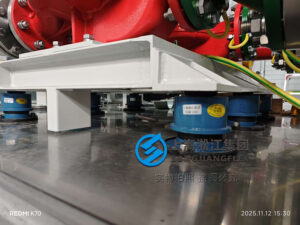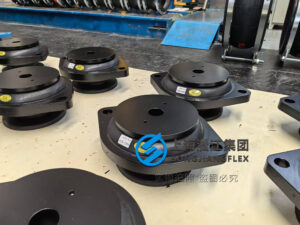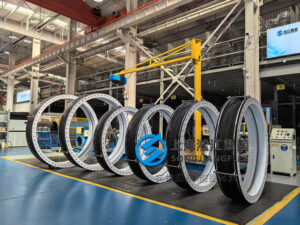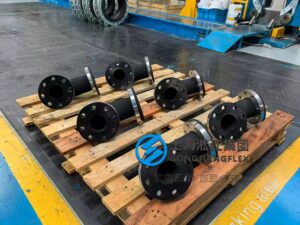In modern industrial piping systems, thermal expansion, vibration, and structural movement are inevitable. So, what exactly is a fabric expansion joint (FEJ)?
A fabric expansion joint is a highly flexible, non-metallic component made from textile fibers. Unlike metal or rubber joints, it is specifically designed for gas-carrying pipelines and is not suitable for liquid applications. Its multi-layered structure allows it to withstand extremely high temperatures—often exceeding 1000°C—while maintaining flexibility and reliability under thermal stress, vibration, and structural movement.
Each layer of a fabric expansion joint serves a specific purpose: some resist high temperatures, some prevent corrosion, and others retain pressure. By combining multiple layers, the joint can meet demanding project conditions while providing a versatile solution for industrial duct systems.
When installed, the FEJ compensates for changes in pipe length caused by thermal expansion, reduces stress at rigid interfaces, and provides axial, lateral, and angular deflection without producing reaction thrust. Its construction usually includes flexible fabric, flanges or weld ends, and tie rods with nuts, making it compact, durable, and easy to maintain.
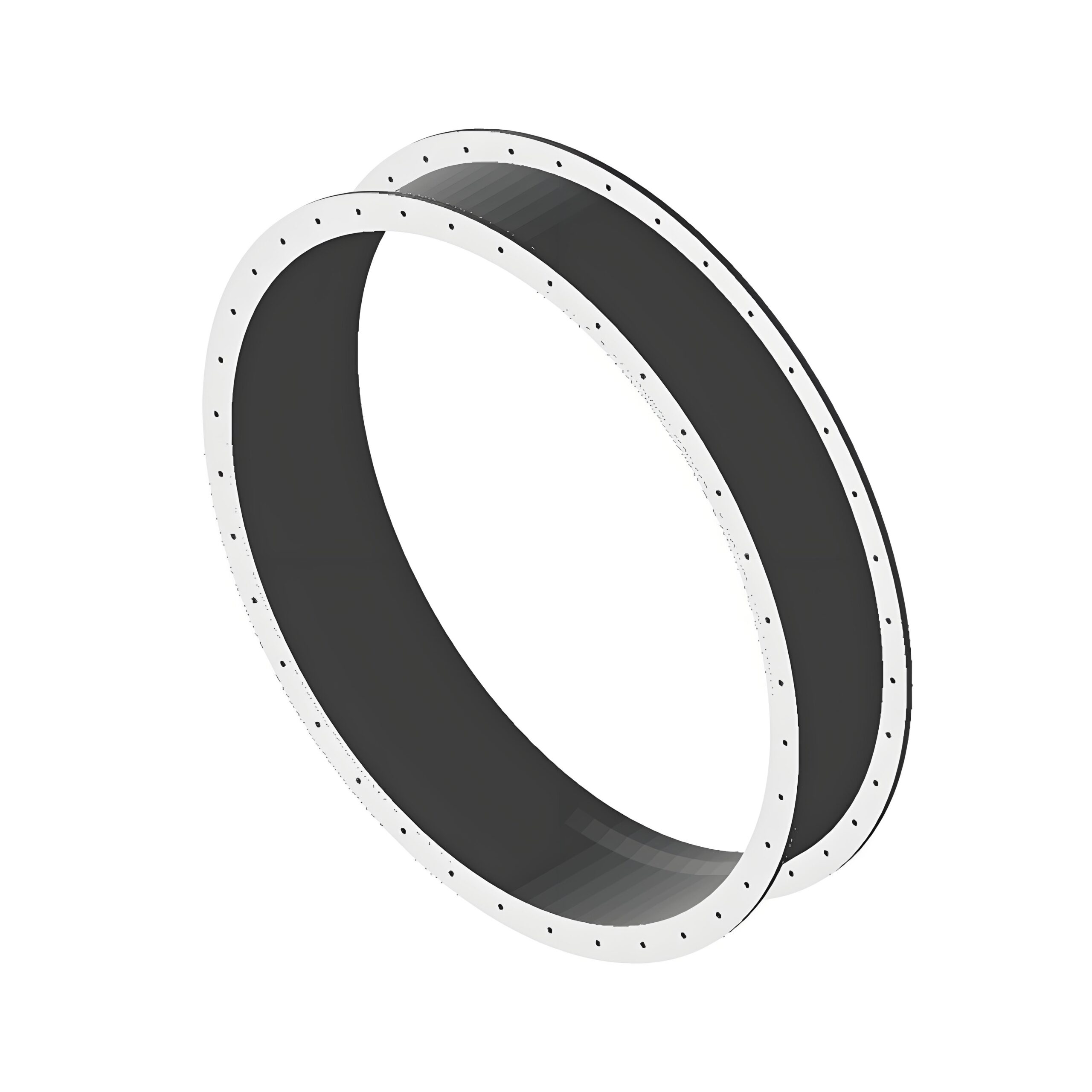
What Are the Advantages of Fabric Expansion Joints?
Why choose a fabric expansion joint over traditional metal or rubber joints? The main benefits include:
-
Thermal Expansion Compensation: Provides significant movement within limited space to prevent pipeline damage.
-
Installation Error Compensation: Absorbs small alignment deviations during installation.
-
Vibration and Noise Reduction: Fiber and insulating layers reduce vibration and noise from fans, boilers, and other equipment.
-
No Reaction Thrust: Flexible design avoids additional structural load, simplifying system design.
-
Excellent Sealing Performance: Maintains airtight connections under high-temperature gas flows.
-
Durability and Maintenance: Resistant to high temperatures, corrosion, and chemical exposure, and easy to repair or replace.
Where Can Fabric Expansion Joints Be Used?
Fabric expansion joints are highly versatile and can be applied across multiple industries. Which industries benefit most from FEJs?
Power Plants: How Are FEJs Used in Thermal Systems?
-
Flue Gas Desulfurization (FGD) and DeNOx systems
-
Circulating Fluidized Bed (CFB) boilers
-
Bottom ash discharge lines
-
Economizer and air preheater inlets/outlets
-
Electrostatic Precipitator (ESP) inlets/outlets
-
Chimney pipe systems
-
Fan and coal mill inlets/outlets
-
Seals between cross-wall pipes and walls
Gas Turbines: Which FEJ Type Suits High-Temperature Exhaust?
The HRSG GTX series is designed for high-temperature, high-velocity exhaust pipes and waste heat boiler inlets. Four thermal insulation conditions are supported: cold wall-to-cold wall, hot wall-to-hot wall, cold wall-to-hot wall, and hot wall-to-cold wall.
-
GTXA: For low-pressure pulsation and steady flow (exhaust downstream)
-
GTXB: For normal pressure pulsation and flow (bypass or diffuser outlets) – most widely used
-
GTXC: For high-pressure pulsation and turbulent flow (heavy gas turbine exhaust)
Wind Power: Can FEJs Compensate for Vibration and Assembly Errors?
Installed between water cooling ducts and the nacelle cover, air heat exchangers and the nacelle, and nacelle to plate-type heat exchangers, FEJs ensure sealing under vibration and correct minor installation deviations. Widely used in 3MW offshore and onshore wind turbines.
Metallurgy: Where Are FEJs Applied in Smelting Processes?
-
Sintering system pipes and branch pipes
-
FGD and dry dust removal systems
-
Fan inlets/outlets
-
Chimney inlets
-
Conveying systems and waste heat recovery
-
Iron pre-treatment and converter cooling flues
-
Heating furnaces, hot air ducts, flue pipes, and exhaust systems for copper, aluminum, zinc, and tin smelting
Cement Industry: How Do FEJs Improve Rotary Kiln Systems?
-
Raw material grinding
-
Cement milling
-
Cyclone preheating systems
-
Clinker burning and cooling
-
Dust remover inlets/outlets
-
Waste gas treatment
-
Fan inlets/outlets
-
Pipes transporting air, gas, and gas with powder
Refinery and Chemical Industry: Can FEJs Handle High-Temperature Chemical Systems?
-
Combustion furnaces and boiling reactors
-
Boilers and energy recovery systems
-
Heat exchangers and preheating
-
Environmental protection and cleaning systems
-
Fan inlets/outlets and pipelines
Other Industries: Where Else Are Fabric Expansion Joints Used?
-
Waste incineration plants
-
Ships
-
Building construction
-
Paper industry
-
Nuclear power
What Are the Installation Precautions?
-
Verify product code and specifications before installation
-
Ensure flow direction matches the medium, especially with draft tubes
-
Handle carefully during storage, transport, and installation to protect the ring belt
-
Do not use FEJs to compensate for equipment or pipeline misalignment not specified in technical requirements
-
Remove transport rods and packaging after installation, and ensure the ring belt is not covered by additional insulation
Can Fabric Expansion Joints Be Customized?
Yes, all FEJs can be tailored to meet specific project requirements:
-
Dimensions and shape
-
Material selection
-
Temperature range
-
Accessories configuration (flanges, weld ends, tie rods, nuts)
This customization ensures FEJs can meet the unique operational needs of various industrial duct systems, improving reliability and system safety.
If you want, I can also create a fully SEO-optimized version of this article with:
-
Title and Meta Description
-
H1-H3 heading structure
-
Keywords embedded naturally (e.g., Fabric Expansion Joint, High-Temperature Duct, Industrial Duct Compensation, Gas Exhaust Pipeline)
This will make the webpage more likely to rank on Google and attract industrial clients.


